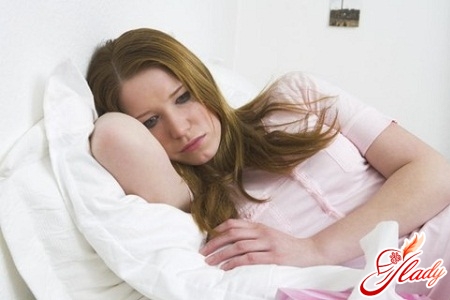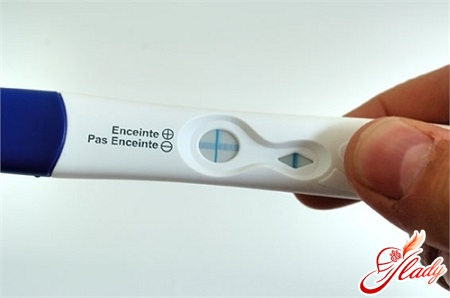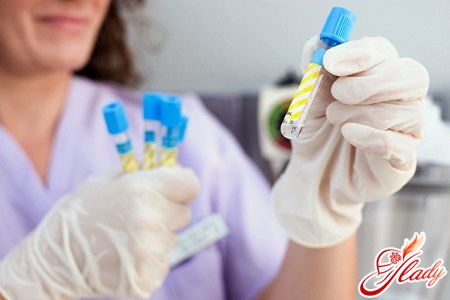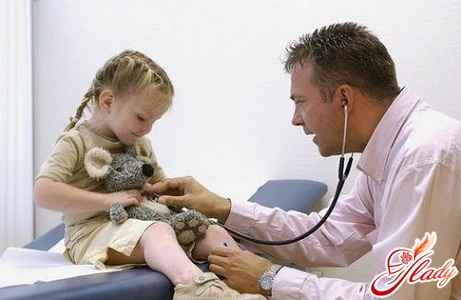 Uterine bleeding is one of the most commonthe main dangers trapped by a woman. And to face them there is a probability in women of absolutely any age. However, the observations of doctors - gynecologists, and dry medical statistics indicate that the probability of developing uterine bleeding is especially high among girls who are in adolescence, or in women who are about to start menopause. Doctors - gynecologists profuse and long-flowing uterine bleeding is defined by such term as "menorrhagia". Before talking about what are the types of uterine bleeding, and about the causes that cause them, it is necessary to understand what is considered the norm, and what is still a pathology. As you know, after the onset of puberty, and right up to the menopause, a woman has monthly menstruation, accompanied by the release of blood from the vagina. Such bleeding occurs as a result of the fact that the inner mucous membrane of the uterus, called the endometrium, flakes monthly, on certain days of the menstrual cycle, the vessels of the mucous membrane of the uterus burst. As a result of the combination of all these factors, menstrual bleeding occurs. As a rule, the onset of menstruation occurs every 23 to 34 days, depending on the characteristics of the menstrual cycle of each woman. Menstruation continues on average from three to seven days. As a rule, the average blood loss per day with normal menstruation is not more than 40 ml. However, very much depends on the individual characteristics of the organism of each particular woman. Some women are "lucky" less than others - their menstruation can be especially long and, most unpleasantly, abundant - blood loss can exceed 80 ml. per day. Of course, it is almost impossible to measure blood loss. That is why the doctors - gynecologists have developed a fairly simple test that any woman can easily carry out absolutely independently. To do this, she just needs to watch the swab or the gasket. In the event that they are thoroughly soaked through with blood in less than one hour, a woman should be alerted and seek help from a gynecologist. Typically, a similar intensity of bleeding occurs precisely with uterine bleeding or too abundant menstruation, which is also a serious enough pathology requiring immediate medical intervention. A woman should in no case ignore such phenomena, because they can cause quite serious negative consequences for the female body. There is also a special test that is designed to help a woman assess her real condition. A woman should consult a doctor if:
Uterine bleeding is one of the most commonthe main dangers trapped by a woman. And to face them there is a probability in women of absolutely any age. However, the observations of doctors - gynecologists, and dry medical statistics indicate that the probability of developing uterine bleeding is especially high among girls who are in adolescence, or in women who are about to start menopause. Doctors - gynecologists profuse and long-flowing uterine bleeding is defined by such term as "menorrhagia". Before talking about what are the types of uterine bleeding, and about the causes that cause them, it is necessary to understand what is considered the norm, and what is still a pathology. As you know, after the onset of puberty, and right up to the menopause, a woman has monthly menstruation, accompanied by the release of blood from the vagina. Such bleeding occurs as a result of the fact that the inner mucous membrane of the uterus, called the endometrium, flakes monthly, on certain days of the menstrual cycle, the vessels of the mucous membrane of the uterus burst. As a result of the combination of all these factors, menstrual bleeding occurs. As a rule, the onset of menstruation occurs every 23 to 34 days, depending on the characteristics of the menstrual cycle of each woman. Menstruation continues on average from three to seven days. As a rule, the average blood loss per day with normal menstruation is not more than 40 ml. However, very much depends on the individual characteristics of the organism of each particular woman. Some women are "lucky" less than others - their menstruation can be especially long and, most unpleasantly, abundant - blood loss can exceed 80 ml. per day. Of course, it is almost impossible to measure blood loss. That is why the doctors - gynecologists have developed a fairly simple test that any woman can easily carry out absolutely independently. To do this, she just needs to watch the swab or the gasket. In the event that they are thoroughly soaked through with blood in less than one hour, a woman should be alerted and seek help from a gynecologist. Typically, a similar intensity of bleeding occurs precisely with uterine bleeding or too abundant menstruation, which is also a serious enough pathology requiring immediate medical intervention. A woman should in no case ignore such phenomena, because they can cause quite serious negative consequences for the female body. There is also a special test that is designed to help a woman assess her real condition. A woman should consult a doctor if:
- The gasket or tampon is completely soaked in less than one hour, as a result, the woman has to use a much larger number of gaskets than usual.
- The woman has to wake up repeatedly in the middle of the night in order to replace the gasket.
- During menstruation, a large number of blood clots are present in the secretions.
- As a result, the woman's menstruation for sometime almost completely "drops out" of the usual way of life - can not attend work, do familiar household chores, and spend most of the time lying in bed.
- A woman feels not just tired, but really exhausted and weak.
- When examining a general blood test, a woman diagnoses iron deficiency anemia, for the occurrence of which there are no other reasons.
- During menstruation, a woman constantly experiences intense pain in the waist and lower abdomen.
The more questions a woman gave a positive answer, the sooner she needs to seek help from a gynecologist.
Causes of uterine bleeding
How strange it would seem, but the reasonsespecially abundant menstruation are unknown to doctors - gynecologists till now. That's why similar menstruation in gynecology is called dysfunctional uterine bleeding. However, in addition to similar menstruation there is a fairly large number of uterine bleeding, the causes of which are known for certain. So, similar reasons can be:
- Violation of the hormonal background of the female body
In the event that a woman has a hormonal backgroundis in a normal state, an optimal balance between such female hormones as estrogen and progesterone is observed. And it is thanks to this that menstruation starts in time, and blood loss with them is minimal. It is thanks to these above-mentioned hormones that there is a natural monthly modification of the uterine mucosa - the build-up and subsequent peeling of the endometrium. And in the event that in the body of a woman there is a hormonal imbalance, the endometrium grows particularly strongly. Yes, and his rejection is unnatural, not at the same time, but for a certain time. As a result, uterine bleeding begins. It is this hormonal imbalance that leads to frequent uterine bleeding in adolescent girls and women who are about to start menopause. The risk of developing such uterine bleeding during the first one and a half years after the beginning of the menstrual cycle of the teenage girl is the highest. This is explained quite simply: in adolescence, the hormonal system of a teenage girl is not yet sufficiently tuned, since it only "turns on" the general work of the organism. And in women who are waiting for the onset of menopause, the hormonal system, on the contrary, is already stopping its full functioning. In both cases, a very strong hormonal imbalance very often occurs, which subsequently can lead to the risk of uterine bleeding.
- Thyroid gland diseases
Another factor that increases the risk of developinguterine bleeding, is a violation of the proper functioning of the thyroid gland. The causes of such disorders can become such diseases as hyperthyroidism and hypothyroidism.
- Diseases of the circulatory system
Sometimes gynecologists facecases in which the main culprits of the occurrence of uterine bleeding are various blood diseases, accompanied by a significant decrease in the level of platelets in the blood. Platelets are necessary in order to stop any bleeding, including uterine bleeding.
- Myoma of the uterus
In the event that the uterine bleeding is causedavailable at a woman myoma of a uterus, not menstruation at the woman much more plentiful and long. The strongest uterine bleeding occurs in submicotic - internal - myoma of the uterus. In such cases, medication does not do any good. In order to facilitate the condition of a woman, she is shown surgical surgical intervention, the purpose of which is removal of uterine fibroids.
- Adenomyosis
With this disease, the following occurs: there is a fusion of the inner and muscular layers of the uterus. Because of this, the area of the menstruating surface of the uterus greatly increases. But the contractile capacity of the uterus is significantly deteriorating. Menstruation in a woman becomes extremely long, abundant and painful.
- Polyps
Quite often, the cause of profuse painfulmenstruation, as well as the development of acyclic uterine bleeding. As a rule, similar uterine polyps are most often observed in women of reproductive age. In order to remove them, a woman needs surgical intervention - curettage of the uterine cavity.
- Complicated pregnancy course
How sad not to talk about it, but enoughoften the cause of uterine bleeding is a complication of pregnancy - either miscarriage in the early stages of pregnancy, or an ectopic pregnancy, or even premature detachment of the placenta. In these cases, a woman should apply for medical assistance as soon as possible to the nearest medical institution in which there is a doctor-gynecologist, or to call an ambulance brigade.
- Oncological diseases of genital organs
Such cancers, as malignantovarian, cervical and uterine bodies, also often lead to the development of sufficiently strong uterine bleeding. In such cases, the cost of delay can be the life of a woman.
- Intrauterine contraceptives
The occurrence of uterine bleeding canis one of the side effects of the use of such nonhormonal intrauterine bleeding as the IUD. And, in addition, if a woman who uses such a contraceptive, takes drugs such as aspirin and other anticoagulants, the risk of developing uterine bleeding increases at times. 
Visit to the gynecologist
In the event that a woman noticed that hermenstruation became extremely painful, prolonged or excessively plentiful, it should as soon as possible seek help from a gynecologist. If a woman has a special calendar in which she notes all the features of her menstrual cycle - the beginning, the end, the abundance - it must be taken with her. Such information will greatly assist the doctor in such a crucial matter as the diagnosis of the disorder and the choice of the optimal treatment tactics. The doctor will perform a classical gynecological examination, take a swab from the uterus's throat. Typically, the doctor appoints a woman several additional studies, including ultrasound of the uterine cavity. Ultrasound can eliminate or confirm the presence of certain gynecological diseases. In cases where a woman suffers from uterine bleeding, the doctor will prescribe a blood test. The results of a general blood test can help determine if there is any inflammatory process in the body of a woman, and also whether iron deficiency anemia has developed as a result of regular blood loss. In addition, a blood test will be conducted, which is aimed at studying the hormonal background of a sick woman. As already mentioned above, hormonal disorders often become the culprits for the development of uterine bleeding. It is on the basis of the data of such a study of blood that a doctor will appoint a woman to study. In some cases, for a precise diagnosis of the cause that caused the development of uterine bleeding, a doctor can prescribe a special diagnostic scraping of the uterine cavity for a woman. It is on the condition in which the woman's endometrium is located that the treatment chosen by the doctor depends. Also, the study of the endometrium will certainly determine whether a woman has malignant neoplasms in the uterine cavity. And, in addition, such scraping is very often an excellent therapeutic tool. And after it, uterine bleeding permanently leaves the woman. This article will not describe the methods of treatment of uterine bleeding, for a number of quite understandable reasons: the causes that cause uterine bleeding can be very different. And that treatment, which will significantly ease the condition of one woman, can harm another. The main task of a woman is to turn to a doctor and gynecologist in a timely manner. And the rest is the doctor's care. We advise you to read:









